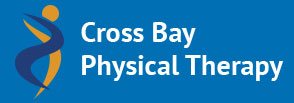Absorbed in your latest project, you’re leaning forward and hunched over your computer. Without even realizing it, your shoulders have rolled forward, hiked up around the ears and your neck is drooping forward. When you finally stand up, it feels like all the muscles in your shoulders, neck and back have migrated to the wrong locations. You’ve got “The Computer Hunch.”
Common in workers with desk jobs, it’s very easy to get involved in work projects and not realize your posture is suffering because of it. The good news is that resolving computer hunch is easy with a few tweaks and corrective exercises.
Evaluate your working situation because ergonomics are important. Make sure your chair is supportive of your entire back and has armrests. A place for the elbows to rest is important to keep the shoulders from rolling forward. In a seated position, your knees should be at a 90-degree angle. Scoot your chair close to your desk to prevent hunching over your workstation. Keep your monitor at eye level to prevent downward neck strain. You can place a tennis ball between your shoulder blades as a reminder to maintain good posture while sitting.
If computer hunch has already set in, there are a few exercises and stretches you can do.
Chest Stretch – Place your hand on a wall corner. Slowly turn away from the wall. You should feel a stretch in your chest. Because of the all the hunching forward, chest muscles lose their flexibility and cause neck and shoulder discomfort.
Foam Rolling – Place a foam roller underneath the upper back and shoulders. Lift your hips and move the roller back and forth underneath you. Start with your fingers interlaced behind your head and after a minute or two, change the arm position to straight above or down by your sides. You’ll soon discover the arm position that elicits the most effective rolling position.
Cross Bay Physical Therapy in Howard Beach offers experienced physical therapists who can help you design a corrective exercise program and regain range of motion in the upper body area. Soft tissue mobilization can also assist with pain, inflexibility and tense muscles. Cross Bay therapists may also use transcutaneous electrical stimulation to increase blood flow in the muscles and improve circulation.
By Benjamin Bieber
